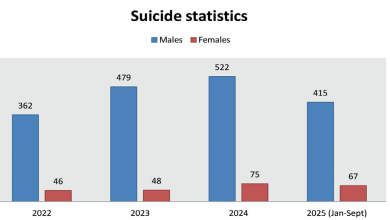New 1-6-6-3 curriculum rollout rests on Ministry of Education
The Malawi Institute of Education (MIE) has completed a radical overhaul of the national school curriculum, proposing a complete shift to a 1-6-6-3 structure.
The initiative is designed to align the entire education system with the industrial, self-reliant goals of Malawi 2063.

While MIE has finalised the proposals and started developing teaching materials, the entire rollout of the new curriculum, including its key structural and skills-based changes, now rests with the Ministry of Education.
MIE executive director Dr. Frank Mtemang’ombe called the review a “significant milestone” aimed at addressing major gaps previously identified in the education system.
“The vision is clear: to establish a more inclusive, skills-oriented, and relevant education system that serves all Malawians and will produce graduates who are better prepared for the job market and innovation,” Mtemang’ombe said.
A statement issued on Friday signed by Mtemang’ombe said the review aims to equip learners with knowledge, skills and values necessary to build a self-reliant and industrialised upper-middle-income nation.
He said the review was necessary in addressing major gaps previously identified in the education system and upon implementation, will produce graduates who are better prepared for the job market and innovation.
“This curriculum review represents a significant milestone in the ongoing transformation of Malawi’s education system to ensure it remains responsive to contemporary realities and future opportunities. While the journey continues, the vision is clear: to establish a more inclusive, skills-oriented, and relevant education system that serves all Malawians” reads part of the statement.
Some notable changes include the introduction of a new school structure (1–6–6–3), which will comprise a Preparatory Class (P-Class), six years of primary education, six years of secondary education (with exit points at Forms 4 and 6), and three years of tertiary or vocational study, a departure from the current 0–8–4–4 system, which has no preparatory class, eight years of primary education (Standards 1–8), four years of secondary education (Forms 1–4), and four years of tertiary or vocational training.
At the secondary level, learners will have four distinct pathways: Social Sciences and Humanities, Arts and Sports Science, STEM (Science, Technology, Engineering, and Mathematics) and TEVET (Technical, Entrepreneurship, Vocational Education and Training).
Furthermore, digital skills will be embedded across the curriculum to prepare learners for the Fourth Industrial Revolution.
On Primary Teacher Education, the review proposes that diploma and degree qualifications with a stronger focus on inclusion, digital literacy, and practical pedagogical skills will be new entry requirements phasing out the existing certificate programme for teachers.
Mzuzu University education expert Dr. Foster Lungu said in an interview yesterday that the review was timely, considering the changing times.
He is, however, sceptical about its implementation, noting that many good initiatives in Malawi are often not executed as planned.
“The missing link may be that we have not done exhaustive consultations. We are assuming that MIE has done that. Some cycles of curriculum reform have faced difficulties during implementation and this one might face the same,” said Lungu.
Civil Society Education Coalition executive director Benedicto Kondowe said the proposed review is a forward-looking step toward improving the relevance and quality of education in Malawi.
“A strong preschool foundation ensures that learners enter Grade 1 ready to learn, while a shorter primary cycle allows for a more focused and age-appropriate curriculum,” he said.
Kondowe said the alignment will also facilitate a smoother transition to secondary school and help address high dropout and repetition rates.





